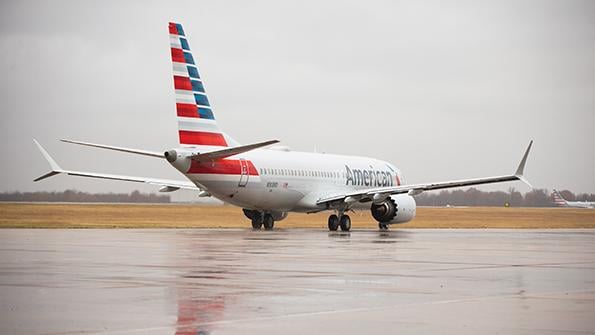
The Boeing 737 MAX has been in service for slightly more than four years, yet its legacy is already defined—at least in part. Two fatal accidents, a global grounding that still has not been lifted completely, an unprecedented design review and mandatory changes to win over regulators (Inside MRO, September 2020, p. MRO 5) will forever be linked to Boeing’s latest, and surely last, 737 variant.
Boeing’s best-case scenario has the 737 MAX fleet growing for a decade or so and flying for several more, racking up the sort of reliable, efficient, uneventful track record the company envisioned when it launched the program in 2011. The model has been back flying again for less than a year, but so far it is—at last—delivering on Boeing’s promises.
Thirty-one operators flew 206,000 cycles and more than 500,000 flight hours from early December 2020—when Brazil’s Gol became the first to reintroduce the variant post-grounding—to the end of October, Boeing says. The fleet’s “schedule reliability” exceeds 99%, Boeing CEO Dave Calhoun said during the company’s Oct. 27 earnings call.
Operators like the MAX in part because it has better fuel efficiency, a benefit that is becoming even more important as fuel prices climb. While the Airbus A320-neo family has outsold the 737 MAX, particularly at the top end, having a minority share of a market as large as global air transport narrowbodies can still be lucrative. Despite the challenges that the 737 MAX program has faced, there is little evidence that operators or lessors will shy away from the model.
Boeing booked 575 gross orders for 737 MAX variants through the first nine months of 2021. Many of them were paired with cancellations that signify customers changing delivery positions to receive aircraft sooner or push them off. Boeing has canceled 373 737 MAX orders this year.
The airframer began 2021 with an official 737 program backlog of 3,282, excluding orders flagged under accounting standards as being at risk. As of Sept. 30, the 737 orderbook stood at 3,334. Most are 737 MAXs destined for airlines, with about 40 business-jet and military versions of the 737 Next-Generation variants mixed in.
The grounding and related delivery hiatus mean the 737 MAX family’s early service years will be marked by a trough of inactivity, with the March 2019-December 2020 period of no operations followed by a steady climb. Boeing has delivered about 600 737 MAXs and has another 370 in the inventory it built up during the grounding. The company plans to have most of the inventory in operators’ hands by the end of 2022. It also expects the production rate to ramp up in early 2022 to 31 per month from the current 19 per month.
Combining the stored inventory and the new-build aircraft, Boeing could be delivering 50-60 737s per month by the middle of next year.
The knock-on effect for the aftermarket is a glut of 737 MAXs entering service in the 2021-23 timeframe, joining a fleet of 385 that was largely new when the global grounding started in March 2019. The ramifications mean the timing of many maintenance events on the first 1,000 or so MAXs will be pushed to the right a few years and bunched together more than under a normal entry-into-service schedule.
Aviation Week’s Commercial MRO Forecast projects about $1 billion in 737 MAX maintenance demand in 2022, with nearly 30% of it coming from the U.S., home to large 737 MAX fleets at Southwest Airlines, United Airlines and American Airlines. By 2030, annual MRO spending will grow to $5.8 billion, including $940 million in engine maintenance.
The forecast sees total MRO demand of $28.4 billion over the 2021-30 period. Components will generate the largest share, at 34%.
The most important variable in the forecast and, in many ways Boeing’s near-term 737 delivery and production plans, is China. The country was the first to ground the 737 MAX following two accidents in less than five months and has not approved its return.
Boeing is confident that it will earn the Civil Aviation Administration of China’s approval by year-end. The country’s airlines account for nearly 100 delivered aircraft and another 120 or so in Boeing’s backlog of built 737 MAXs. Aviation Week’s MRO forecast sees the country as the third-largest for 737 MAX MRO work in 2022.
Aircraft that are not flying do not need much maintenance, and China’s 737 MAXs have not moved since March 2019. How quickly they resume flying will influence how much aftermarket support China’s airlines will need in the next few years.





